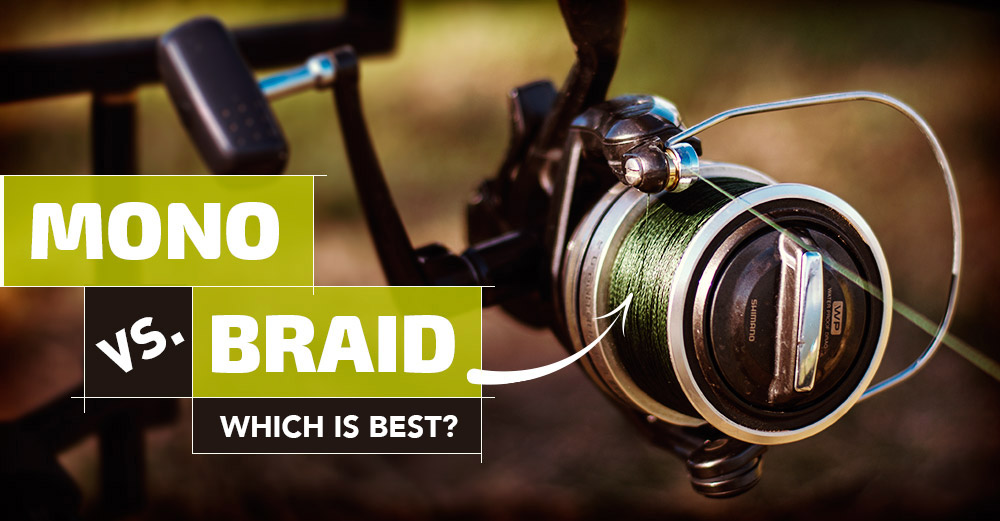Braided vs Monofilament: Which Line Is For You?
Not sure where you stand in the monofilament vs braided dilemma? We’ll help.- September 1, 2016
- Fishing, Tips
- Posted by Administrator
- Leave your thoughts
One of the biggest debates in the fishing world often plays out between monofilament and braided fishing lines, between the old veterans who have been using mono all their lives to the up-and-coming anglers who claim that braided fishing line breeds better catches. Certainly, both types of line have their pros and cons and you will have to decide which is best for you based on your own fishing preferences and on what characteristics are most important to you in a line.

Braided Fishing Lines
As the name indicates these are fishing lines with braids. They are made by joining many material fibers. When using braided lines, it is easier to know when the fish is struggling with the bait because is more sensitive compared to other fishing lines. Also, these fishing lines are designed to tie stronger knots, and since it has no memory, the knots can be untied. The braided fishing are thin hence more of it can be turned around the reel. Braided fishing line have no stretch. Hence, they are very sensitive to fish bites and are commonly used for deep sea fishing and for those fish that are relatively gentle on struggling with the bit.
Advantages Of Braided Lines
Braided fishing lines are currently made of synthetic materials that offers unique strength as well as maintaining a small diameter, allowing easy casting with much less stretch and greater sensitivity for the fisherman. Also, most of the braided fishing lines are difficult to break in case they are snagged and will straighten hooks facilitating retrieval of the lures. Recent braid types work perfectly tough cover while flipping hence reducing chances of line breakage when retrieving the fish. Moreover, these lines make the best choice to be used for fishing in thick weed mats enabling anglers to pull the fish. When braided lines are properly maintained, they can have a considerably long reel life.
Disadvantages
The common disadvantage of the braided fishing line is that it is usually difficult to break it when snagged. Also, braided lines are considered to be more expensive compared to the monofilament lines. These lines can cause a lot of friction on reel parts, line guides, and rods causing them to wear prematurely and ultimately break. Due to their visibility, braided lines are never the best when fishing clear water.
Monofilament Fishing Lines
Fishing Line MomfilamentAs it is clearly stated by the word mono. These are one stranded fishing line. These fishing lines were first introduced in the market in 1939. They are commonly made of several varieties of nylon mixed to form a polymer with the desired characteristics. Monofilament fishing line have a unique feature of absorbing water, thus making it sink under water. However, the absorption of water depends entirely on the kind of material in which the fishing line is made of.
Characteristics Of Monofilament Fishing Lines
The fact that monofilament lines absorb water makes the flexible and easier to handle as compared to other stiffer lines. Also, monofilament lines are known to stretch more than all other fishing lines. Its capacity to stretch aids in preventing the hook from tearing the mouth of the fish. This lines also have a higher shock resistance strength and overcome any force exerted in the hook set.
Monofilaments are known to have broader diameters. This has a significant effect on how deep the lures dive. They slowly sink making it be a preferred choice for lures that should remain on top of the water. When it comes to cost, monofilament lines are relatively cheap compared to other fishing lines.
Manufacturers find it easy to tint monofilament fishing lines. Thus, these lines have been made of a wide spectrum of colors such as blue and green.
Here is a great video explaining the differences between braid and monofilament and which situations are best suited for each.
General Comparison Between Mono And Braided
Braided fishing lines are more prone to abrasion effects compared to the monofilament. Monofilament usually breaks when knotted, but the braided lines are known to make strong knots. Also, monofilament lines may permanently kink when knotted. The braided fishing lines are thinner and almost equally strong as the monofilament fishing lines. The main problem with the braided lines is that they very visible on the clear water making the fish avoid the bait. Braided lines float making them easier to cast and due to their flexibility nature and long length they can cover a longer distance than the monofilament.
In choosing the best fishing line depends on species of fish, the aquatic area to be fished, the gears used, prevailing environmental conditions, and the preference of the angler himself.
Saltwater Fishing
The salt in the water affects the fishing lines due to their corrosion nature. The monofilament fishing line wears very first when they are used in marine fishing. However, due to the size and weight of the fish in these aquatic environments call for braided lines and monofilaments for small sized fish.

